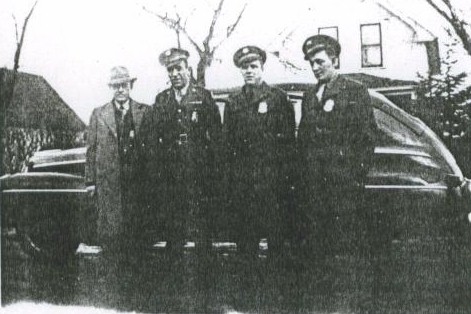
Juvenile Facilities in South Dakota........
In South Dakota the total number of privately run juvenile facilities for 2000 was thirteen. The total number in 2002 was twelve and in 2004 the total numbers of privately run juvenile facilities were thirteen. During the four year time period the numbers slightly dropped in 2002 to twelve but went back to thirteen two years later. I think the reason the numbers have stayed the same is because the crime trend in South Dakota has stayed the same. Overall the crime rates and crime stories in South Dakota are not very high therefore their facilities would stay the same. The numbers of privately owned juvenile facilities could also be staying the same over this time period because of the way the system works in South Dakota. If the system is very strict and gives no chances to juveniles, or any person for that matter, then this could scare the juveniles to not commit any crimes. Another reason the number of facilities have stayed the same could be the culture in South Dakota. If many families are strict with their children then this will keep them away from crime. If the juveniles are not committing crimes then they will not be sent to facilities and the state would not need more of them.
Jail Populations in South Dakota in 1998......
In 1999 in the state of South Dakota, there was 31 jails. They had a rating capacity, the number of beds or inmates assigned by a rating official to facilities within each jurisdiction, of 1,623. The jails in South Dakota were under capacity with a mere 66% rated capacity occupied. One reason for the under capacity, can be due to population. South Dakota had a population census in 1999 stating that they had 733,133 people living in that state. This means that out of the entire population only 7% were locked away in jail. A trend occurs with population and crime rate, the larger the population the higher the crime rate. Since South Dakota has a small population size, they should have a lower crime rate, thus allowing for under capacity in jails. Another reason for this under capacity could be because of the types of criminal in the jails. The U.S. Department of Justice, Bureau of Justice Statistics by the U.S. Census Bureau Census of Jails, 1999, states that they held inmates beyond arraignment (usually more than 72 hours). This means that anyone who stayed in jail before those 72 hours were not counted in the census, thus causing a possible under capacity in the jails. The final reason for this under capacity is because of incorrect crime rate statistics. Like all cities there are a great number of unreported crimes. South Dakota crime rates could be skewed because of these unreported crime rates, leaving criminals on the streets, and not in jail, thus causing an under capacity of inmates in the jail.
Male to Female Ratio in Prisons......
In South Dakota the prisoner ratio for male to females in jail is significantly high. In 2000 there were 200 females in prison. In 2006 there was a 150 person increase to 350. In 2007 it went up again to 369. The percent change from 2000 to 2006 was a 9.8 in increase. From 2006 to 2007 there was a 5.4 increase.
On the other side of the spectrum are the males. In 2000 there were 2,416. In 2006 there were 3,009. In 2007 there were 2,942. The percentage increase in 2000 to 2006 was 3.9. As one can see, the percentage decreased from 2006 to 2007 by 2.2.
Three reasons for the increase in the male ratio are:
South Dakota has the highest percentage of American Indian male inmates than any of its neighbors.
There has been more White people move to South Dakota and that causes an up-roar in the Native American community
Woman Wise the increase is because:
Misguided policies that create harsher sentences for nonviolent drug offenses are disproportionately responsible for the increasing rates of women in prisons and jails. From 1995 to 2003, inmates incarcerated in federal prisons for drug offenses have accounted for 49 percent of total prison population growth.
There has been a 32% increase in women using the drug Meth
Citations.....
Citation for Juvenile Facilities in South Dakota:
2009 South Dakota Juvenile Information. Retrieved Nov. 23, 2009, from the World Wide Web: http://www.albany.edu/sourcebook/pdf/t100092004.pdf
Citation for Jail Populations in South Dakota:
Waldron, R., & Schuldt, C. M. (2009). South Dakota Population Statistics General Demographic Information. Retrieved Nov. 23, 2009, from University of South Dakota, Vermillion, SD. Web site: http://people.usd.edu/~rwaldron/popstats.html






